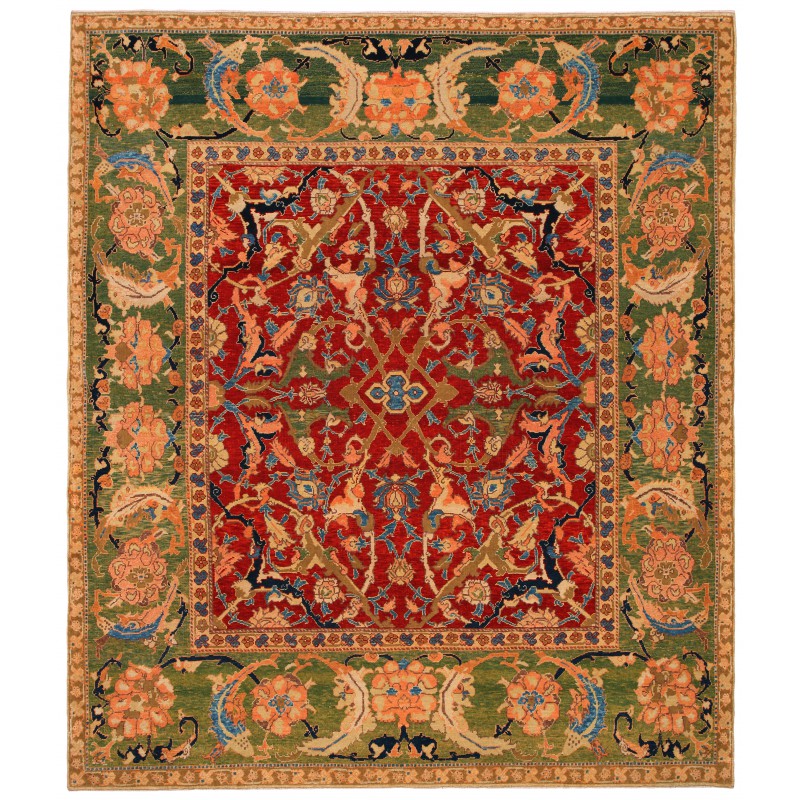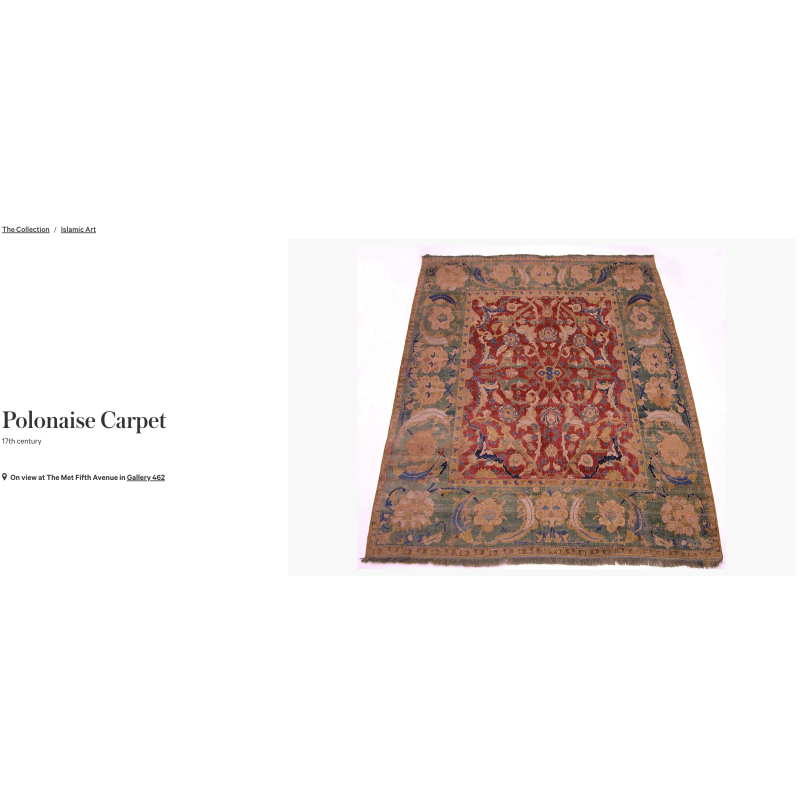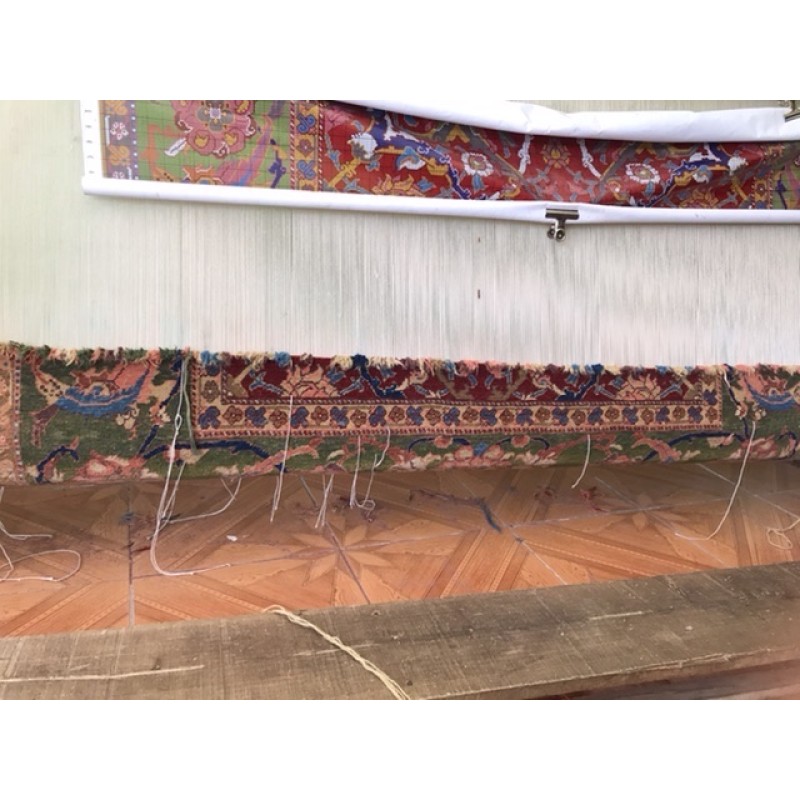





- Stock: In Stock
- Model: C50264
- サイズ: 181cm x 213cm
この絨毯の情報は、Maurice S. DimandとJean Maileyによる著書『Oriental Rugs in the Metropolitan Museum of Art』(1973年、fig.90)からのものです。いわゆる「花瓶技法絨毯」が17世紀のサファヴィー朝の工房織りの勝利を象徴していたのに対し、サファヴィー朝のもう一つのグループの絨毯で、一般的には誤って「ポロネーズ」または「ポーランド」絨毯として知られているものは、サファヴィー朝の織り手が派手で高価な目立つ消費品を作るためにどこまで行くかを示しています。ポロネーズ絨毯は、17世紀のイランの国営工房で織られたと考えられており、おそらく王政支持者や外国の高官への贈り物として特別に作られました。なぜポーランドなのか?中東の伝統的な実践に従えば、「私の敵の敵は私の友人である」ということです。17世紀のローマ・カトリックのポーランドとシーア派のイランの王たちは、彼らの2つの王国の間にある広大なスンニ派のオスマン帝国に共通の敵意を抱いていました。
この具体的な例は、メトロポリタン美術館(MET Museum)で展示されています。オリジナルに合った最適な色彩がこの絨毯に使用されています。
The source of the carpet comes from the book Oriental Rugs in the Metropolitan Museum of Art, Dimand, Maurice S., and Jean Mailey, The Metropolitan Museum of Art, New York 1973 fig.90. If the so-called vase-technique carpets represented the triumph of Safavid workshop weaving in the seventeenth century, another group of Safavid carpets, popularly if erroneously known as “Polonaise” or “Polish” carpets, demonstrates the extent to which Safavid weavers would go to create flashy and expensive objects of conspicuous consumption. Polonaise carpets are believed to have been woven in state-controlled workshops in seventeenth-century Iran and were probably created specifically as royal gifts to noble supporters of the regime and to foreign dignitaries. Why Poland? In time-honored and still current Middle Eastern practice, “the enemy of my enemy is my friend.” Seventeenth-century Roman Catholic Polish and Shi’ite Muslim Persian Kings had one thing in common; they were both opposed to the vast Sunni Muslim Ottoman Turkish Empire that lay between their two kingdoms.
The exact example is exhibited at The Metropolitan Museum of Art (MET Museum). The most appropriate colors to match the original is used for this carpet.
